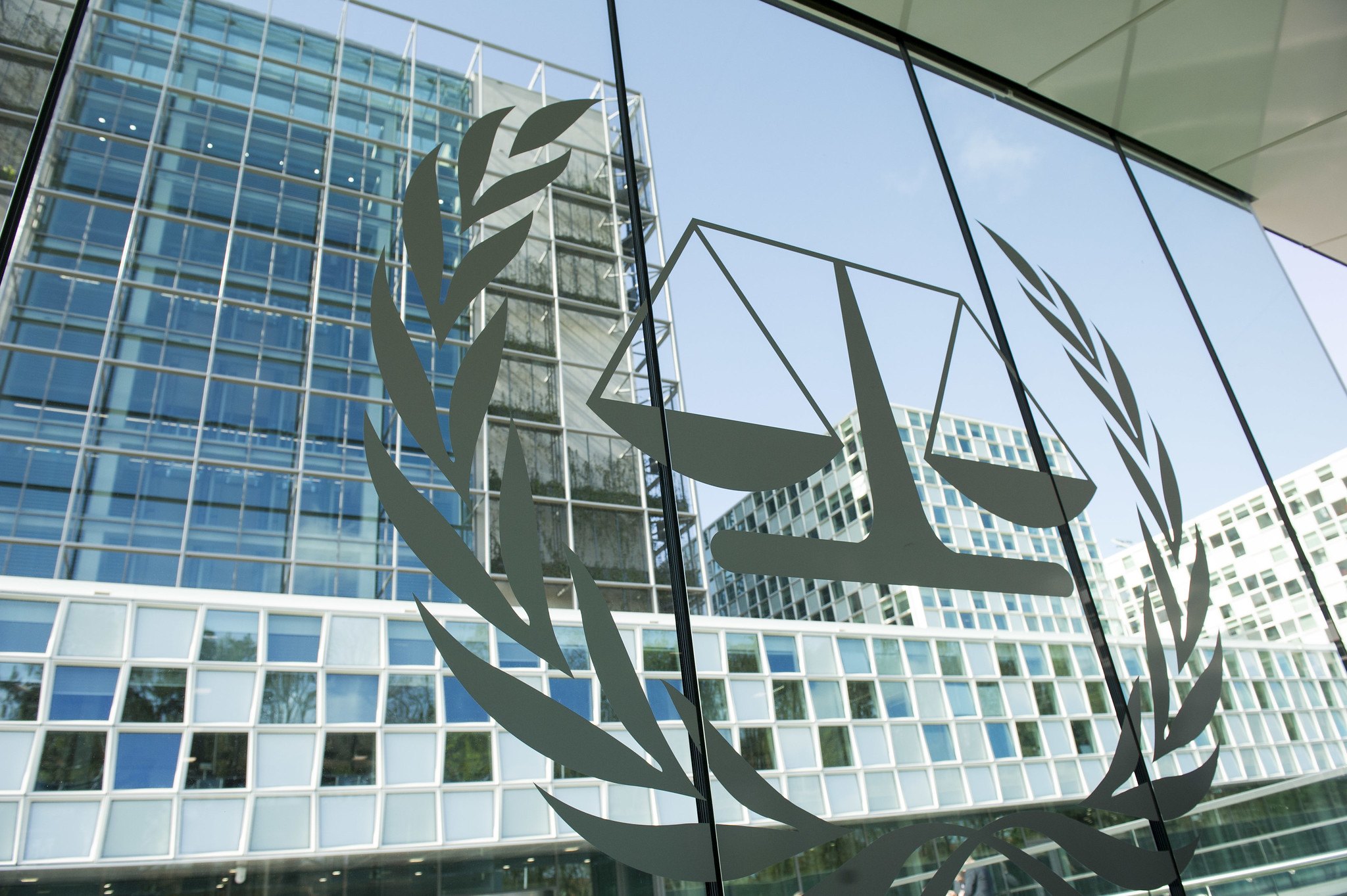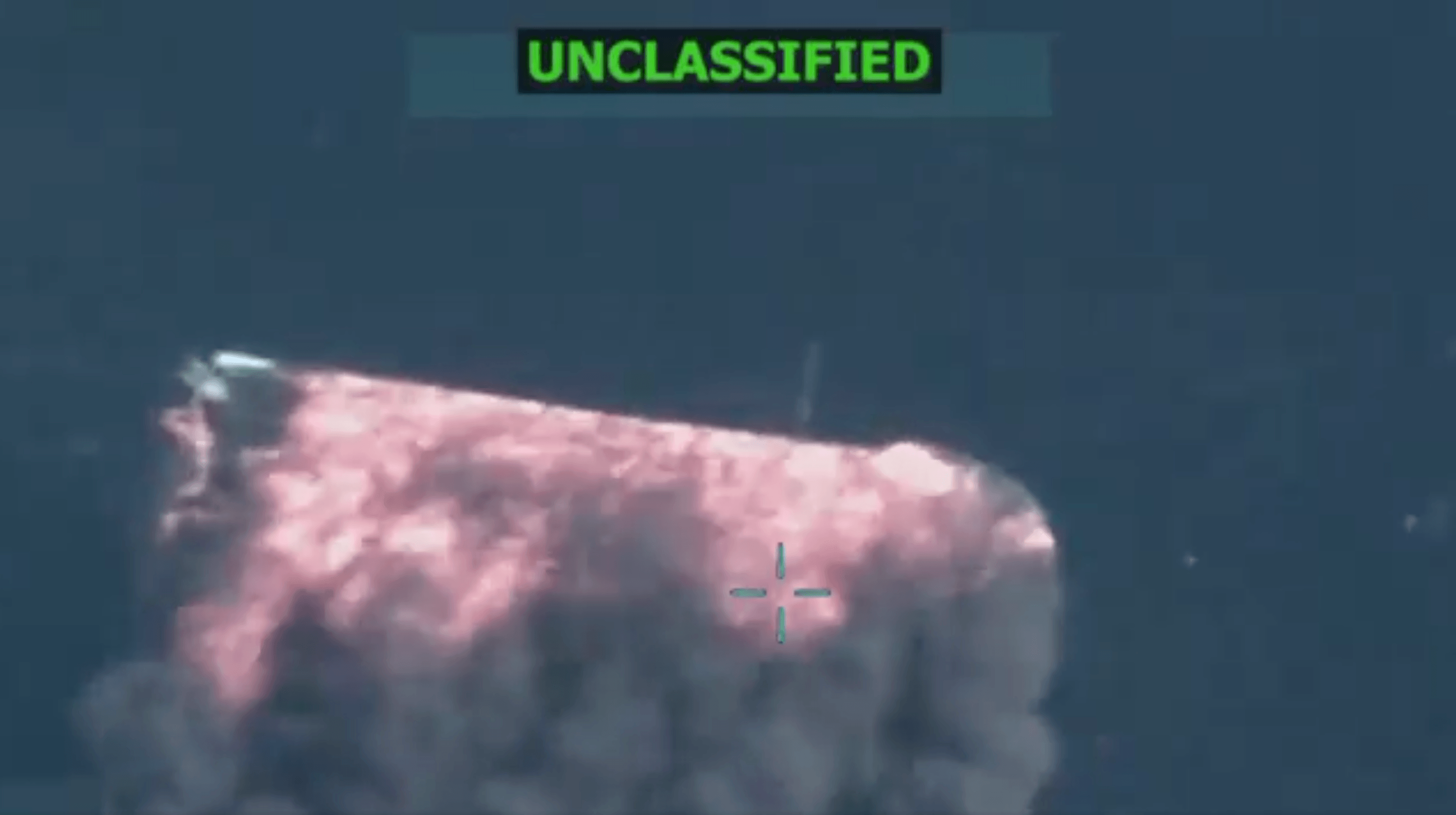The ‘End of Immunity’ for Leaders Who Commit International Crimes?
A review of Chile Eboe-Esuji, “The End of Immunity: Holding World Leaders Accountable for Aggression, Genocide, War Crimes, and Crimes Against Humanity” (Prometheus, 2024).

Published by The Lawfare Institute
in Cooperation With

Judge Chile Eboe-Osuji’s new book advances a provocative argument: Customary international law does not recognize and has never recognized immunity before international courts for heads of state who commit international crimes while in office. The book addresses a complex and at times technical legal question, yet it offers both a compelling historical narrative and a call to action. Its contribution to the existing literature on immunity thus lies in its ability to simplify a complex area of the law, and to present a forceful claim that world leaders who commit atrocity crimes need to face accountability. In today’s world, where member states of the International Criminal Court (ICC) have refused to cooperate with the court in the arrest and surrender of heads of states with outstanding warrants, and where atrocity crimes continue to be committed on behalf of states, Eboe-Osuji’s book seems particularly timely. It should serve as a valuable resource for all of those interested in international criminal law, and particularly in the law of immunities.
The Debate Over Head-of-State Immunity
To those who have followed Eboe-Osuji’s career, and his tenure as an ICC judge in particular, the book’s central argument will come as no surprise. Eboe-Osuji has expressed the same view in several blog posts, as well as in a previous academic article. In 2019, he co-authored the ICC Appeals Chamber’s decision in the Omar Hassan Al-Bashir case (as well as the accompanying four-judge joint concurring opinion), holding that Article 27 of the Rome Statute, which provides that the ICC does not recognize official immunities, including head-of-state immunity, reflects customary international law. According to the Appeals Chamber, “there is neither State practice nor opinion juris that would support the existence of Head of State immunity under customary international law vis-à-vis an international court.” The four-judge joint concurring opinion elaborated on this point by discussing historical precedents such as the plans to try the Kaiser after World War I and the Nuremberg Charter’s specific exclusion of head-of-state immunity as a possible defense; subsequent international law instruments reflecting the same view, such as the Nuremberg Principles, the International Law Commission’s draft Code of Offences Against the Peace and Security of Mankind, and the Genocide Convention; and decisions by more recent international courts and tribunals, such as the International Criminal Tribunals for Yugoslavia and Rwanda, the Special Court for Sierra Leone, and the International Court of Justice (ICJ).
Eboe-Osuji’s book elaborates on arguments made in the above-mentioned ICC and other tribunals’ opinions, in part by focusing on major developments in international criminal law over the past century, and in part by placing his anti-immunity view in the context of the Russian aggression against Ukraine and the resulting discussions about the necessity to hold President Vladimir Putin accountable. The book’s proposed path forward includes enhancing the prospects of criminal prosecution for the crime of aggression through Rome Statute amendments and exposing those responsible for aggression to the risk of personal civil liability. In Eboe-Osuji’s view, the latter can be achieved through the adoption of an “international covenant that specifies peace as an actionable fundamental human right.”
To fully assess the persuasiveness of Eboe-Osuji’s view on immunities, it is important to examine it within the context of other leading scholarship on the subject. Like Eboe-Osuji, Leila Sadat, who teaches at Washington University in St. Louis, has argued that the Rome Statute, which rejects head-of-state immunities as a bar to prosecution, reflects customary international law. She has contended that customary international law removes immunities before international criminal courts of all kinds with respect to the commission of jus cogens crimes. Claus Kress, a professor at the University of Cologne, has adopted a more nuanced view, rejecting the view that head-of-state immunity before international criminal courts is already established as a customary law, but that, consistent with the jus puniendi nature of international criminal law (the right and power to punish those who commit international crimes), the Al-Bashir decision has “moved the development [of customary law] to a law-crystallising point.”
Other scholars, however, disagree with Eboe-Osuji’s position. William Schabas, whose view Eboe-Osuji explicitly challenges in this book, has opined that the Rome Statute’s removal of head-of-state immunity applies only to states parties but that non-party states have not renounced such immunity. Thus, according to Schabas, who teaches at the University of Middlessex, the Al-Bashir Pre-Trial Chamber’s decision was wrong in holding that immunity is inapplicable before international criminal courts as a matter of customary law. Finally, Dapo Akande, whose view Eboe-Osuji seems most concerned with throughout the book, has adopted the most restrictive view on immunities.
According to Akande, an Oxford professor who is a member of the International Law Commission and will be nominated by the United Kingdom to serve as a judge on the ICJ, immunities may exist as a matter of treaty instruments only if such instruments specifically remove the relevant immunity, and only if the state of the official concerned is bound by the relevant immunity-removing instrument. Akande thus agrees with Schabas that the removal of immunities in the Rome Statute applies only to states parties and that the Al-Bashir decision was wrong in its determination that immunities do not exist as a matter of customary law before international criminal courts.
Akande rests his view on the delegation theory of international tribunals’ jurisdiction, under which such tribunals derive jurisdictional powers only from their constituent states. Thus, international tribunals can do only as much as their constituent states can; if states are barred by the principle of personal immunity from prosecuting current leaders of other states, then international tribunals remain equally prohibited from instituting criminal proceedings against sitting political or military leaders of sovereign states unless such tribunals’ statutes specifically remove immunity as a bar to prosecution. Nothing in customary law, according to Akande, refutes this view of jurisdiction; courts, such as the ICC in Al-Bashir and the Special Court for Sierra Leone in the Charles Taylor case, have oversimplified their analysis of customary law.
A Historical Narrative and a Call to Action
Eboe-Osuji develops his argument about the lack of immunity under customary international law across 10 chapters organized chronologically. Although other scholars have written about the historical events discussed in this book, Eboe-Osuji discusses these through a singular lens: discussions about immunity.
Eboe-Osuji begins in Chapter 3 by focusing on three peace conferences for law reform: the 1899 First Hague Conference, the 1907 Second Hague Conference, and the 1919 Paris Peace Conference. The three peace conferences, according to Eboe-Osuji, reflected the need to reform international law “by giving it punitive impetus” through establishing an “international jus puniendi” —a right to punish those who violate societal rules through the establishment of international criminal law norms.
Chapters 4 through 7 focus on Article 227 of the Versailles Treaty, which provided for the establishment of a special tribunal to prosecute the Kaiser. Chapter 4 recounts the negotiations that led to adoption of Article 227, and it concludes that the drafters of Article 227 consciously sought to create precedent that would contribute to the establishment of a new international law norm providing that leaders who commit atrocities should face accountability before an international tribunal. Chapter 5 supports this conclusion by reviewing numerous expert studies and discussions among post-World War I global leaders about immunity and the need to establish an international tribunal to prosecute the Kaiser. Chapter 6 attempts to rebut arguments made by distinguished scholars, such as William Schabas, who in his book The Trial of the Kaiser argues against the view that Article 227 established or reflected a new legal norm. Eboe-Osuji relies extensively on the work of Charles Kress; he also refers again to the negotiating record of the Paris Peace Conference, which resulted in the Versailles Treaty.
Chapter 7 addresses the Dutch refusal to surrender the Kaiser, following adoption of Article 227. Eboe-Osuji explains the Dutch refusal as a “reasonably defensible position” in light of the Netherlands’ neutrality during World War I and the fact that the contemporaneous rules of international law “encompassed the right of the Dutch to grant asylum to the Kaiser.” Yet, according to Eboe-Osuji, the failure to prosecute the Kaiser in no way diminishes the argument that Article 227 represented a precedent-setting step toward a norm of international law, one that would subsequently be relied upon by the Special Court for Sierra Leone in the Taylor case and by the ICC in the Al-Bashir case.
Chapter 8 focuses on a related post-World War I development, the so-called Leipzig Letdown. Here, Eboe-Osuji discusses the German unwillingness to surrender their own nationals accused of having committed crimes during World War I for prosecution by the Allies, as had been contemplated by Article 228 of the Versailles Treaty, as well as the German decision to pass national legislation under which Germans would be prosecuted at the Reichsgericht in Leipzig. The outcome of the Leipzig trial was disappointing from an accountability perspective: Only 13 out of a total of 901 defendants were convicted, and most of those convicted were not forced to serve any prison sentences. Eboe-Osuji concludes by arguing that the Allies refused to repeat the Leipzig mistake at Nuremberg.
Chapter 9 engages in a thorough review of the 1945 London Conference, which resulted in the establishment of the Nuremberg Tribunal. In this chapter, Eboe-Osuji quotes extensively from a 1945 report written by Justice Robert Jackson and presented to President Truman, in which Jackson concluded that immunity of heads of state was an “obsolete doctrine” and that there existed a “juridical principle that aggressive war-making is illegal and criminal.” Thus, Nuremberg, according to Eboe-Osuji, built on the existing precedent of Article 227 and the norm-setting attempt to prosecute the Kaiser. Chapter 10 describes the norms expressed in the Charter of the International Military Tribunal at Nuremberg, and, in particular, that “heads of state and heads of government were subject to prosecution before the international criminal tribunal with no immunity available to them.”
Chapter 11 discusses the International Law Commission’s formulation of Nuremberg Principles, which incorporate in Principle III the express formulation of no head-of-state immunity from responsibility under international law. Finally, Chapter 12 focuses on international criminal justice in the post-Nuremberg era, by discussing the establishment of more recent tribunals, such as the Yugoslavia and Rwanda tribunals, the ICC, the Special Court for Sierra Leone, and the Kosovo Specialist Chambers. This chapter also discusses the ICJ Yerodia case, in which the world court held that there is no rule under customary international law that would grant immunity to heads of state from prosecution before international tribunals. Eboe-Osuji also emphasizes Article 27 of the ICC Rome Statute, which reaffirms Nuremberg Principle III and reflects customary law.
Chapters 1, 2, 13, and 14 contribute to the central narrative of the above-discussed chapters. Chapter 1 discusses the existence of a gap in the accountability framework, which relates to the narrow jurisdictional regime over the crime of aggression in the Rome Statute, which has so far allowed leaders like Putin to escape the court’s jurisdictional reach. Eboe-Osuji then discusses the possibility of establishing a special aggression tribunal for Ukraine, whose “flaw” would be “the question of immunity.” Chapter 2 discusses the development of the crime of aggression as a “supreme crime,” setting the stage for the detailed historical account that follows in Chapters 3-12. Chapter 13 explains that although the concept of immunity developed as the “divine right of kings,” in today’s world “the composite rationales employed to justify immunity—among equals none may sit in judgment over another, immunity is necessary to avoid hindrances to functions of rulership, etc.—must at some point provoke difficult questions about the unseemly effect of that particular fiction.” Thus, Eboe-Osuji discards the “cartel of impunity.” Chapter 14 builds on the same idea by arguing that in today’s changing times, head-of-state immunity is an anachronistic idea that has no place in the 21st century, as firmly established by international practice since 1945. Finally, Chapter 15, as mentioned above, argues in favor of a new order of accountability with enhanced prospects for criminal prosecution and civil liability.
Some Limitations
Eboe-Osuji’s work has many virtues, not least of which is his clear and compelling style. But his retelling of history may be criticized as mostly limited to Europe. Moreover, as another reviewer has noted, the book suffers from a lack of precise technical discussions. For example, the book discusses the difference between immunity ratione materiae and ratione personae only in passing, thereby neglecting the abundant scholarly literature on this important distinction. Although Eboe-Osuji focuses on the latter, it would have been useful for him to distinguish between the two and to explain more thoroughly why the former may not matter. For example, it may be possible to argue that Eboe-Osuji has adopted the legality model, according to which responsibility and immunity are a single question and the only relevant inquiry is whether an official has committed an illegal act. According to this view, immunity ratione materiae does not matter; so long as the official has acted illegally, the elimination of immunity ratione personae allows for prosecution. Eboe-Osuji could have included a fuller discussion of these concepts in order to make clear why he chose to focus only on immunity ratione personae. The book also fails to grapple with the relationship between treaty provisions and customary law and, in particular, with whether provisions adopted despite registered dissent can serve as evidence of customary law.
Eboe-Osuji might respond that this book is not a technical treatise; it is a work of advocacy, in which complex technical discussions would have been out of place. Indeed, he acknowledges that the book steers away from “diving too deep into the pool of legal arcana.”
Conclusion
The strengths of “The End of Immunity” lie in its elegant language, its thorough recounting of historical developments regarding immunity, and its passionate call to action for accountability for heads of state who commit atrocity crimes. It thus reflects Judge Eboe-Osuji’s long-standing quest to establish accountability for high-ranking officials and represents a kind of intellectual culmination of his career. In Eboe-Osuji’s words, “[a]ny argument for immunity of heads of state is effectively a protest against the judicial process[.]”




.jpg?sfvrsn=eacea73f_5)
